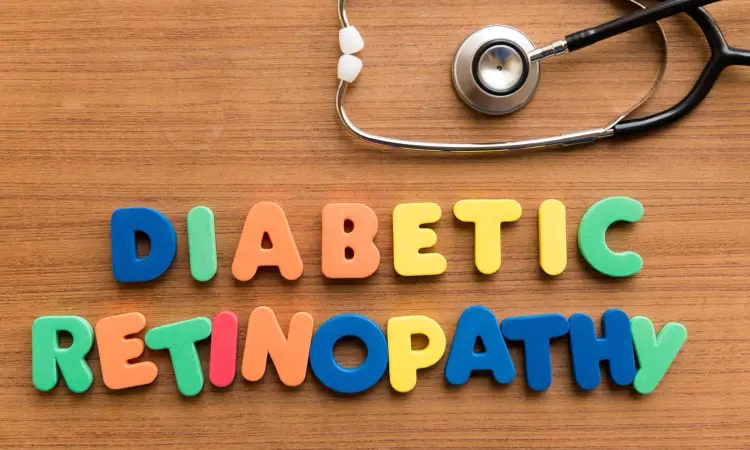- Home
- Medical news & Guidelines
- Anesthesiology
- Cardiology and CTVS
- Critical Care
- Dentistry
- Dermatology
- Diabetes and Endocrinology
- ENT
- Gastroenterology
- Medicine
- Nephrology
- Neurology
- Obstretics-Gynaecology
- Oncology
- Ophthalmology
- Orthopaedics
- Pediatrics-Neonatology
- Psychiatry
- Pulmonology
- Radiology
- Surgery
- Urology
- Laboratory Medicine
- Diet
- Nursing
- Paramedical
- Physiotherapy
- Health news
- Fact Check
- Bone Health Fact Check
- Brain Health Fact Check
- Cancer Related Fact Check
- Child Care Fact Check
- Dental and oral health fact check
- Diabetes and metabolic health fact check
- Diet and Nutrition Fact Check
- Eye and ENT Care Fact Check
- Fitness fact check
- Gut health fact check
- Heart health fact check
- Kidney health fact check
- Medical education fact check
- Men's health fact check
- Respiratory fact check
- Skin and hair care fact check
- Vaccine and Immunization fact check
- Women's health fact check
- AYUSH
- State News
- Andaman and Nicobar Islands
- Andhra Pradesh
- Arunachal Pradesh
- Assam
- Bihar
- Chandigarh
- Chattisgarh
- Dadra and Nagar Haveli
- Daman and Diu
- Delhi
- Goa
- Gujarat
- Haryana
- Himachal Pradesh
- Jammu & Kashmir
- Jharkhand
- Karnataka
- Kerala
- Ladakh
- Lakshadweep
- Madhya Pradesh
- Maharashtra
- Manipur
- Meghalaya
- Mizoram
- Nagaland
- Odisha
- Puducherry
- Punjab
- Rajasthan
- Sikkim
- Tamil Nadu
- Telangana
- Tripura
- Uttar Pradesh
- Uttrakhand
- West Bengal
- Medical Education
- Industry
Lactate dehydrogenase linked to incident diabetic retinopathy among diabetics

China: A recent study evaluated the level of relationship between lactate dehydrogenase (LDH) and the occurrence of diabetic retinopathy (DR) in patients with diabetes mellitus (DM). The researchers revealed that LDH concentrations are connected with an increased prevalence of DR in diabetes patients.
The study, published in the Journal of Diabetes, highlights that patients with LDH > 134 U/L are distinguishably related to diabetes mellitus complicated by diabetic retinopathy. The researchers note that DR is more common in diabetic patients with coronary heart disease (CHD).
Lactate dehydrogenase is a glycolytic enzyme that significantly impacts metabolic oxidative stress (OS). There is a positive correlation between the cumulative amount of LDH and the number of damaged cells. Previous studies have shown that unstable hyperglycemia can stimulate the action of protein kinase C and trigger an OS response. Lack of oxygen and elevated glucose levels have been observed to raise LDL levels in retina cells.
Oxidative stress is critical in the pathophysiology of diabetic retinopathy. The overabundance of reactive oxygen species holds the potential to cause tissue damage in the surrounding area of retinal blood vessels, ultimately leading to DR development.
Gangyi Yang, Second Affiliated Hospital of Chongqing Medical University, Chongqing, China, and colleagues therefore aimed to evaluate the level of relationship between lactate dehydrogenase and the occurrence of diabetic retinopathy in adults with diabetes.
For this purpose, the researchers analyzed five sectional data cycles acquired from the National Health and Nutrition Examination Survey from 2009 to 2018. The study involved the selection of diabetes mellitus samples from a complex multistage probability sample. Subsequently, these samples were classified into two distinct groups, the No DR (NDR) and DR groups.
The researchers comprehensively investigated the social and biological risk factors associated with DR. The biological factors examined in the investigation included blood routine, blood pressure, blood glucose, haemoglobin A1c, and comorbidities. The social dimensions encompass sex and education.
The study led to the following findings:
- After considering all factors, multivariate regression models indicated a significant relationship between DR and increased LDH (adjusted odds ratio = 1.007).
- The subgroup analysis revealed that the effect size of LDH on the existence of DR in the subgroups remained consistent.
- A statistically significant relationship was identified between elevated LDH levels > 134 U/L and a raised risk of DR in people with DM.
"We discovered that an increased LDH level was connected to an elevated DR incidence," the researchers wrote. "Our research found that when LDH is > 134 U/L, LDH and DR are positively correlated."
They added, "In our subsequent research, we plan to conduct a cohort study to determine the potential of LDH as a predictive factor for DR. At the same time, diabetic patients with CHD should be advised to strengthen DR screening for disability prevention."
Reference:
Yang, P., Xu, W., Liu, L., & Yang, G. Association of lactate dehydrogenase and diabetic retinopathy in US adults with diabetes mellitus. Journal of Diabetes. https://doi.org/10.1111/1753-0407.13476
Dr Kamal Kant Kohli-MBBS, DTCD- a chest specialist with more than 30 years of practice and a flair for writing clinical articles, Dr Kamal Kant Kohli joined Medical Dialogues as a Chief Editor of Medical News. Besides writing articles, as an editor, he proofreads and verifies all the medical content published on Medical Dialogues including those coming from journals, studies,medical conferences,guidelines etc. Email: drkohli@medicaldialogues.in. Contact no. 011-43720751


